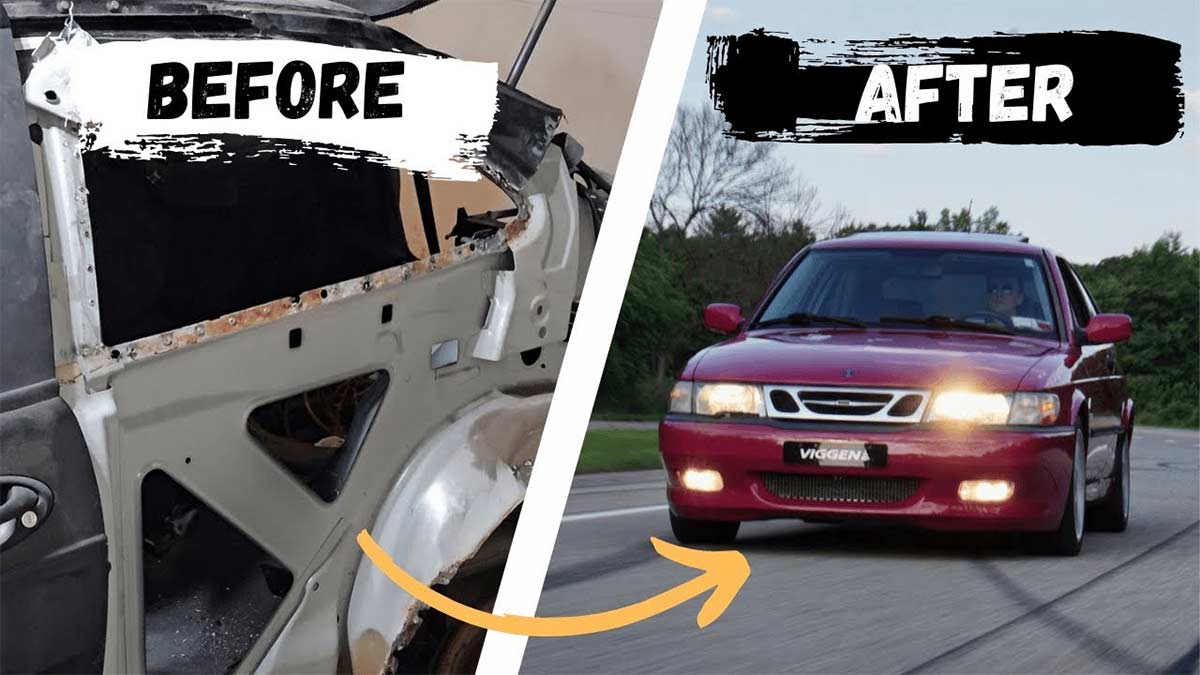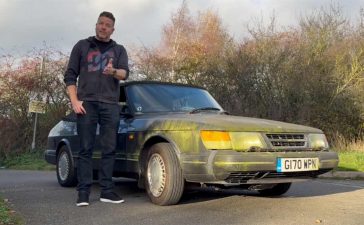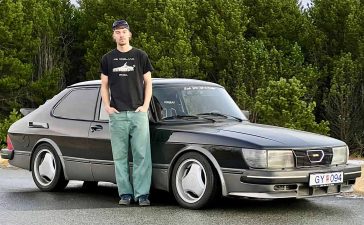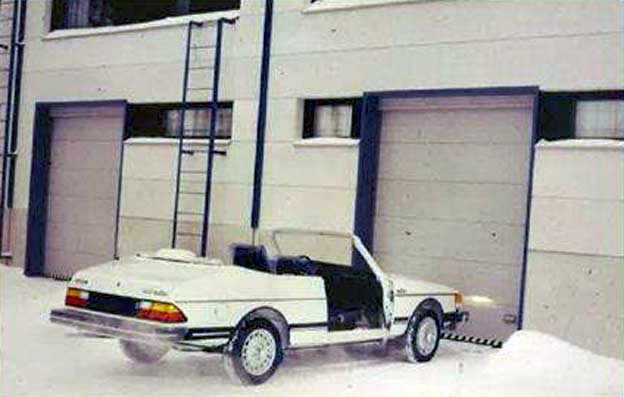American creator Jared, the face behind the YouTube channel SaabSquad, has quietly become one of the most compelling voices documenting Saab ownership in the United States. His editing is sharp, his topics are focused, and he has a habit of taking on cars other owners would walk away from. Nothing illustrates that better than the Viggen he decided to save – a 2000 Saab 9-3 with severe structural rust and a long list of hidden problems.
The car arrived in rough shape. The driver-side rear quarter panel was so compromised that sanding, patching, or temporary repairs were pointless. The metal had rotted through from the inside out, leaving the panel unstable and the structure exposed. Instead of finding another shell or giving up on the project, Jared committed to replacing the entire section. That decision defined the rest of the build.
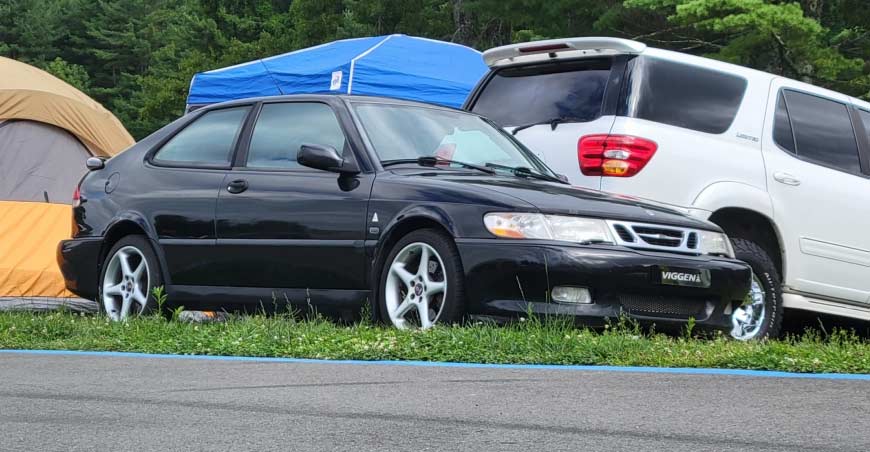
He started by stripping everything behind the B-pillar: rear seats, trims, the taillight, even the rear window. Only after clearing the interior could he reach the welds holding the quarter panel to the chassis. The first cuts revealed how deep the corrosion had spread. Removing the panel wasn’t a cosmetic job — it was a structural rescue. Once the spot welds were drilled out and the seam sealer scraped away, the entire quarter finally came loose. At that point, as Jared describes it, “the realization for what a monumental task lay ahead” kicked in. There was no turning back.
Before installing the replacement panel, he test-fitted it to confirm alignment. With everything lining up correctly, he took it off again and coated the contact surfaces in weld-through primer – a copper-based layer that prevents oxidation and ensures clean welds. Only after that prep work did the long process of welding begin. Hundreds of spot welds had to be redone one by one, a task that stretched across several days. When the welding was finished, he sealed every seam and covered the bare metal in primer to avoid future corrosion.

With the structure restored, the Viggen could finally be reassembled. Jared’s original plan was a clean black finish close to factory spec, but he changed direction after considering how much work the car had already gone through. He wanted something bold, something that would make the car instantly recognizable. Instead of paint, he chose a wrap – Porsche Ruby Star Red, a color with motorsport pedigree and unmistakable presence.
The timing wasn’t ideal, though. As the Viggen was getting wrapped, Jared had to leave for several days of brand-ambassador training at Porsche North America. The video shows him surrounded by GT3s and RS models on the Atlanta track, but his attention remained on the Saab back home. The first moments on camera after returning show exactly how he felt: the car finally looked unified, one color nose to tail, and the transformation was complete.
Video: “Rescuing a Performance ICON – How I Saved My Saab 9-3 Viggen”
Jared closes the video by saying this was the hardest automotive project he has ever taken on – and the footage supports every word. The rust, the structural cutting, the welding, the reassembly, the wrap, and the determination needed to pull it off show exactly why this story deserves a place on SaabPlanet.com. His Viggen isn’t a quick flip or a cosmetic refresh; it’s a rescue that required patience, skill, and a willingness to rebuild a Saab performance icon from bare metal.
Jared at SOC42: Viggen Back on the Surface It Was Built For
Before closing the story, it’s worth highlighting that Jared didn’t rebuild his Viggen just to park it. The car soon returned to the kind of environment that exposes whether the work was done right — the track. At SOC42, one of the largest Saab gatherings in the United States, the event’s track-day session became the perfect testing ground.
Jared joined other Saab owners in pushing their cars through a series of fast laps, braking zones, and corner sequences that reveal every weak point. His Viggen, now structurally solid and wrapped in Ruby Star Red, held its own. The footage from the event shows exactly why this restoration mattered: the chassis work wasn’t cosmetic — it restored the car’s ability to handle stress, load transfer, and high-speed grip.

